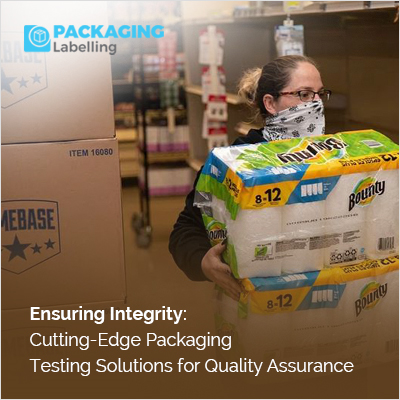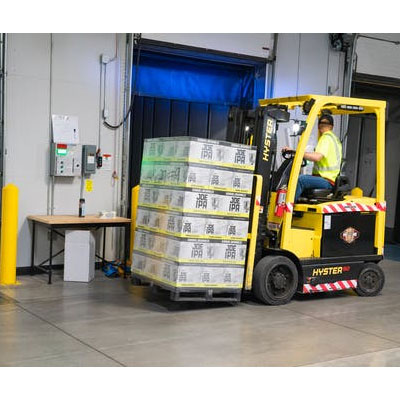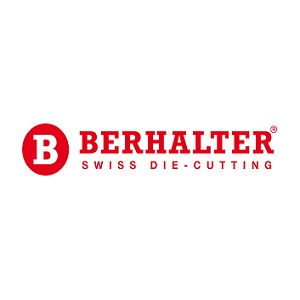Ensuring Integrity: Cutting-Edge Packaging Testing Solutions for Quality Assurance

Packaging plays a pivotal role in ensuring the integrity and safety of products across various industries. From pharmaceuticals to food and beverages, the quality of packaging directly impacts the quality of the enclosed products. To maintain high standards of quality assurance, cutting-edge packaging testing solutions have become indispensable. These solutions encompass a range of techniques and technologies designed to evaluate the performance, durability, and reliability of packaging materials. In this article, we delve into the importance of packaging testing, explore innovative testing solutions, and discuss their significance in ensuring integrity and consumer safety.
A. Importance of Packaging Testing
Packaging serves multiple purposes beyond just containing products. It acts as a barrier against external factors such as moisture, light, and contaminants, preserving the freshness and efficacy of the contents. Moreover, packaging is often the first point of contact between consumers and products, making its visual appeal and functionality crucial for brand perception and consumer satisfaction.
Packaging failures can have serious consequences, ranging from product spoilage and contamination to regulatory non-compliance and reputational damage. Therefore, rigorous testing of packaging materials is essential to identify potential weaknesses, ensure compliance with industry standards, and mitigate risks associated with product integrity and safety.
B. Types of Packaging Testing
Physical Testing: This category of testing evaluates the physical properties of packaging materials, including strength, flexibility, puncture resistance, and seal integrity. Techniques such as tensile testing, burst testing, and compression testing are used to assess the mechanical strength and performance of packaging under various conditions.
Chemical Testing: Chemical testing focuses on analyzing the chemical composition of packaging materials to ensure they are safe for contact with food, pharmaceuticals, or other sensitive products. This includes testing for migration of harmful substances, presence of heavy metals, and compliance with regulatory requirements such as FDA regulations for food contact materials.
Microbiological Testing: In industries like pharmaceuticals and cosmetics, microbiological testing is crucial to assess the microbial contamination risk associated with packaging. Tests for sterility, bacterial endotoxins, and microbial growth potential are conducted to prevent microbial ingress and maintain product stability.
Environmental Testing: Environmental testing simulates real-world conditions to evaluate the performance of packaging materials under various temperature, humidity, and light exposure scenarios.
Accelerated aging tests, UV exposure tests, and thermal cycling tests help assess the durability and shelf-life of packaging.
Barrier Testing: Barrier properties such as oxygen transmission rate (OTR), moisture vapor transmission rate (MVTR), and light transmission are critical for perishable products and sensitive materials. Barrier testing measures the ability of packaging to protect contents from external factors and maintain product quality over time.
C. Innovative Packaging Testing Solutions
Advancements in technology have revolutionized packaging testing, enabling more accurate, efficient, and comprehensive assessment of packaging integrity. Here are some cutting-edge solutions shaping the landscape of packaging testing:
Non-Destructive Testing (NDT): NDT techniques such as X-ray inspection, ultrasonic testing, and thermal imaging allow for thorough inspection of packaging without damaging the contents. These methods are particularly valuable for detecting internal defects, seal integrity issues, and foreign contaminants.
Real-Time Monitoring: IoT (Internet of Things) and sensor-based technologies enable real-time monitoring of packaging performance during storage and transit. Smart packaging solutions equipped with sensors can track parameters like temperature, humidity, shock, and vibration, providing valuable data for quality control and logistics optimization.
Advanced Analytical Techniques: Spectroscopic techniques such as FTIR (Fourier Transform Infrared Spectroscopy) and Raman spectroscopy provide detailed insights into the chemical composition of packaging materials. These techniques are used for identification of polymers, detection of contaminants, and characterization of material properties.
Digital Simulation: Computer-aided design (CAD) software and finite element analysis (FEA) tools allow for virtual simulation of packaging performance under different environmental conditions and mechanical stresses. Digital simulations help optimize packaging design, predict failure points, and accelerate product development cycles.
Blockchain Traceability: Blockchain technology is increasingly being integrated into supply chains to enhance traceability and transparency. In packaging testing, blockchain-enabled systems can track the entire journey of packaging materials, from raw material sourcing to production, testing, and distribution, ensuring accountability and authenticity.
D. Significance of Cutting-Edge Packaging Testing
The adoption of cutting-edge packaging testing solutions offers several significant benefits across industries:
Enhanced Product Safety: By identifying potential hazards and vulnerabilities early in the packaging design phase, advanced testing solutions contribute to improved product safety and reduced risks of contamination or spoilage.
Compliance Assurance: Stringent regulatory requirements necessitate thorough testing and documentation of packaging materials. Cutting-edge testing solutions facilitate compliance with industry standards and regulatory guidelines, avoiding costly recalls and legal issues.
Cost Optimization: Efficient testing processes, real-time monitoring, and digital simulations help optimize packaging designs for performance and cost-effectiveness. This leads to reduced material waste, lower production costs, and enhanced sustainability.
Brand Protection: High-quality packaging reflects positively on brand reputation and consumer trust. Advanced testing solutions ensure that packaging meets quality standards, aligns with brand values, and delivers a positive user experience, enhancing brand loyalty and competitiveness.
Innovation Catalyst: The continuous evolution of packaging testing technologies drives innovation in packaging design and materials. From eco-friendly materials to smart packaging concepts, these innovations contribute to industry growth and market dfferentiation.
E. Challenges and Future Trends
Despite the advancements in packaging testing, certain challenges persist, such as the complexity of multi-material packaging, evolving regulatory landscapes, and the need for standardized testing protocols. Future trends in packaging testing are likely to focus on:
Sustainability: Increased emphasis on sustainable packaging solutions will drive the development of eco-friendly materials and recyclable packaging options. Testing methodologies
Integration of AI and Big Data: AI-powered analytics and big data integration will enable predictive modeling, anomaly detection, and optimization of testing processes. Machine learning algorithms can analyze vast amounts of data to identify patterns, improve decision-making, and enhance quality control.
Remote and Automated Testing: With the rise of remote work and automation, packaging testing may incorporate remote monitoring systems, robotic testing platforms, and AI-driven quality assurance tools. This trend aligns with Industry 4.0 principles and enhances testing efficiency and scalability.
Regulatory Harmonization: Global harmonization of regulatory standards for packaging testing will streamline compliance efforts for multinational companies and facilitate market access. Collaboration between industry stakeholders, regulators, and standardization bodies will be crucial in this context.
In conclusion, cutting-edge packaging testing solutions are indispensable for ensuring the integrity, safety, and quality of products in diverse industries. These solutions not only mitigate risks and ensure compliance but also drive innovation, sustainability, and consumer trust. As technology continues to advance and industry priorities evolve, packaging testing will remain a critical aspect of quality assurance and brand differentiation in the competitive marketplace.









